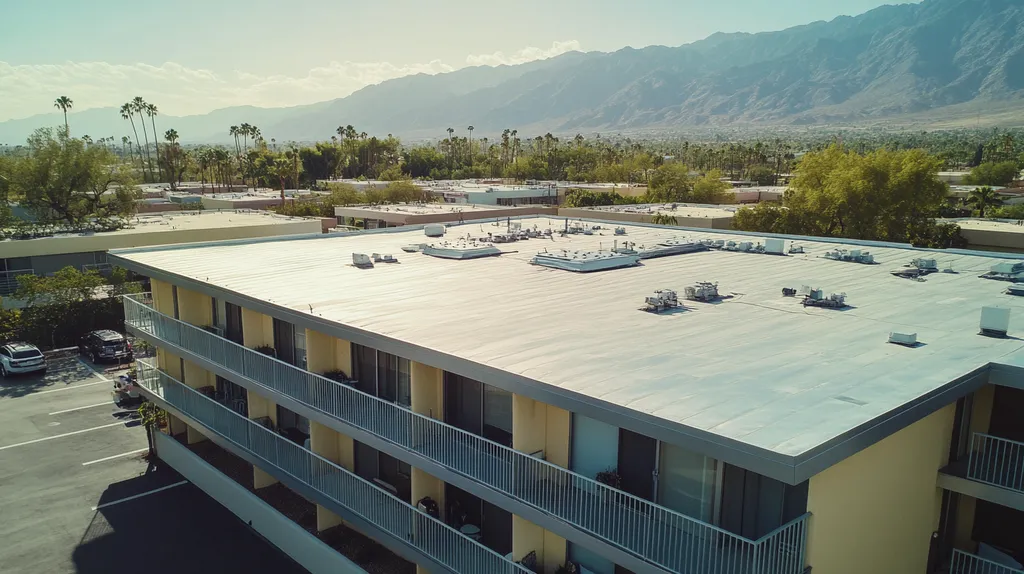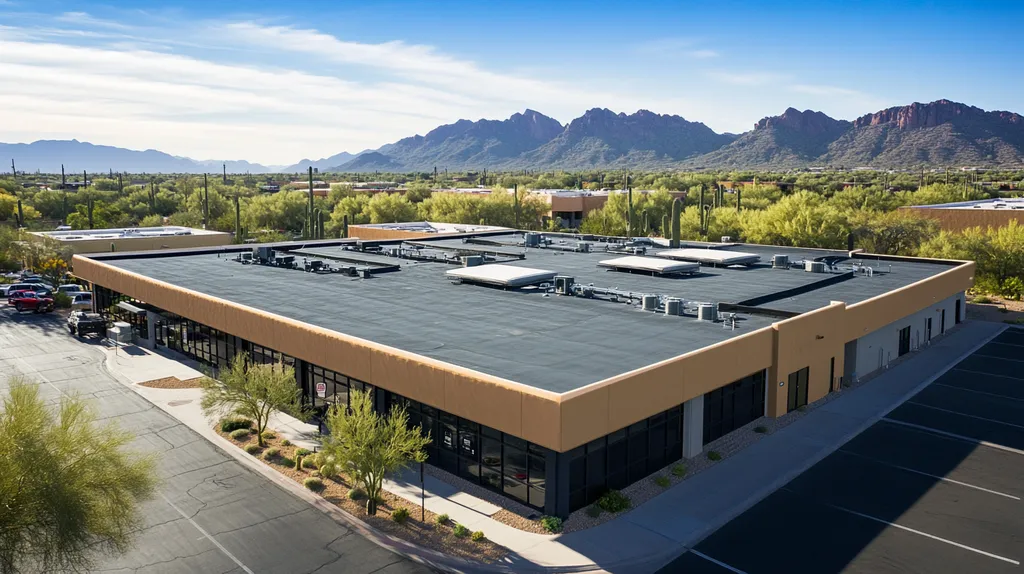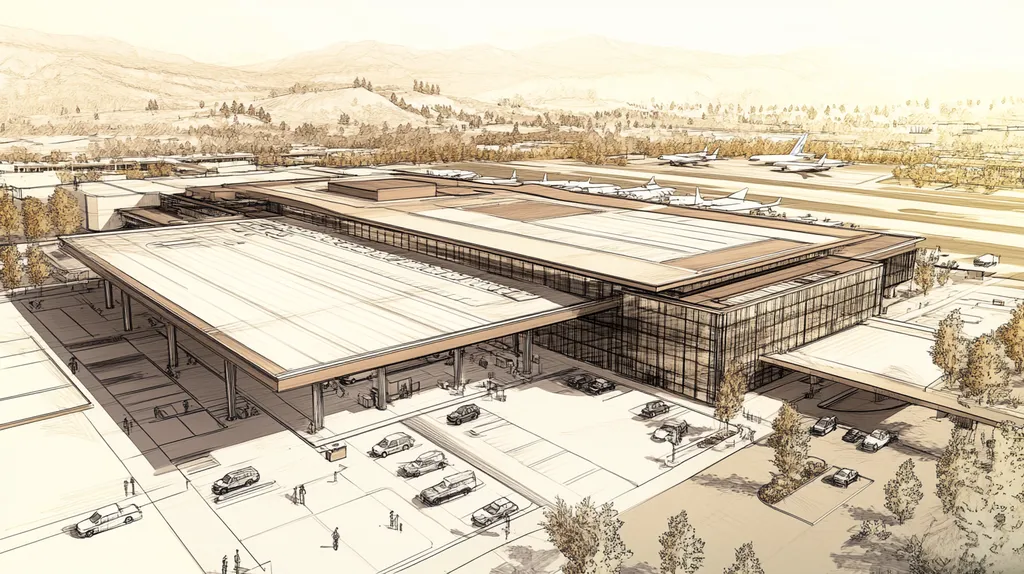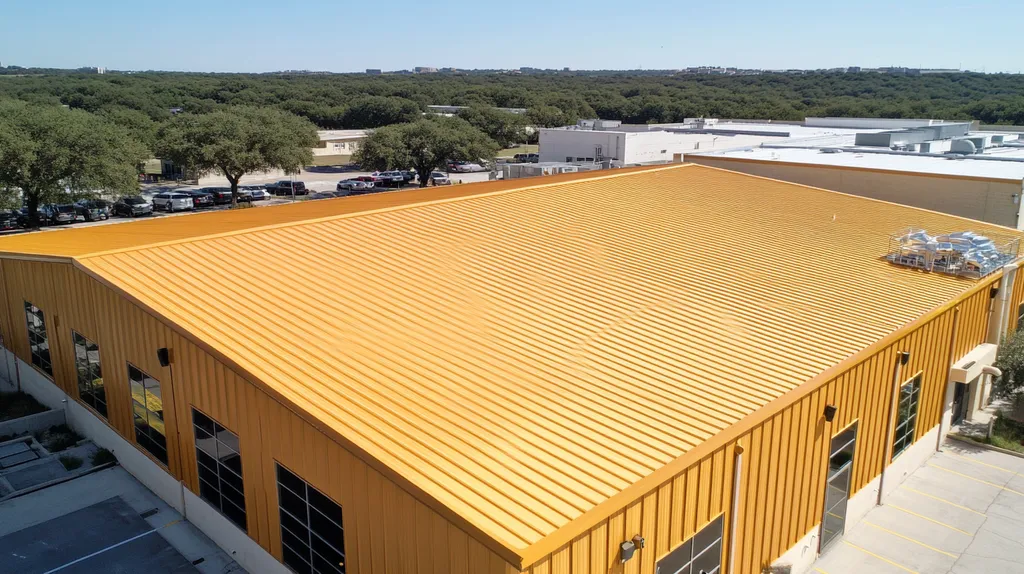In today’s industrial landscape, nearly 40% of cooling tower installations fail to meet efficiency standards, leading to millions in wasted energy costs annually. The consequences of poor cooling tower selection and implementation continue to plague facility managers across the country.
As energy prices surge and environmental regulations tighten, the stakes for proper cooling tower implementation have never been higher. Recent industry studies show that optimized cooling towers can reduce HVAC energy consumption by up to 35%.
This comprehensive guide cuts through common misconceptions, revealing the truth about cooling tower capabilities, maintenance requirements, and integration strategies for industrial buildings.
SECTION 1: COMMON MISCONCEPTIONS
Misconceptions surrounding cooling towers can lead to significant financial missteps for industrial property owners. Many believe these systems are only needed for large facilities, creating a false perception that limits their potential benefits. Concerns over water consumption and energy efficiency further discourage exploration of cooling towers. Understanding these myths is essential, as proper use of cooling towers can boost operational efficiency across a wide range of facility types.
Cooling Towers Are Only for Large Facilities
A prevalent misunderstanding is that cooling towers offer advantages solely to large industrial operations. In truth, smaller buildings can also benefit significantly from these systems. Cooling towers enhance temperature controls and lead to reduced energy costs, making them valuable assets regardless of a facility’s size.
For example, even a small manufacturing plant can experience substantial savings in air conditioning expenses through the installation of a cooling tower. This not only bolsters environmental efforts but also strengthens the financial health of the business.
Modern cooling towers come in various sizes, enabling them to meet diverse operational requirements. With options tailored for smaller applications, facility owners should re-evaluate their strategies to include these innovative systems.
By overlooking cooling towers as an option for smaller facilities, many owners forfeit opportunities for efficiency and savings. Recognizing the adaptability of cooling towers is vital for contemporary industrial management.
High Water Consumption is Inevitable
Another myth about cooling towers is their supposed excessive water consumption. Although cooling towers do require water for operation, technological advancements have drastically reduced their water needs.
Innovative designs, such as closed-loop systems, allow for recycling water, significantly cutting down on overall usage. These systems optimize water resource management, addressing both environmental issues and cost concerns.
Moreover, many facilities now incorporate rainwater harvesting techniques to further support cooling tower operations. This approach not only lessens dependence on municipal water supplies but also champions sustainability. The notion that high water consumption is unavoidable is becoming outdated.
With effective management and cutting-edge technology, cooling towers can run efficiently with minimal water usage. Property owners should revisit their outdated perceptions regarding water consumption in cooling systems.
Cooling Towers Are Energy Inefficient
Many hold the view that cooling towers are energy inefficient. However, when designed and maintained properly, these systems can actually enhance energy efficiency within a facility. By improving heat dissipation, cooling towers lower the demand on traditional air conditioning units.
In hotter climates, cooling towers can serve as a more efficient solution compared to relying solely on electric cooling systems, which helps decrease overall energy consumption and greenhouse gas emissions.
Additionally, the integration of advanced control systems permits better energy management, allowing facilities to optimize cooling performance while also driving down energy costs. This technological evolution is reshaping how energy is perceived in cooling applications.
By confronting these misconceptions, facilities can utilize cooling towers to maximize efficiency and sustainability, establishing them as a crucial element of modern industrial roofing.
SECTION 2: PRACTICAL IMPLICATIONS
Investing in cooling towers for industrial roofs is not just a trend; it’s an essential strategy for modern property owners. With nearly 30% of energy consumed in commercial buildings devoted to HVAC systems, the stakes couldn’t be higher. Efficient cooling solutions can drastically reduce that figure. Recognizing the practical implications of cooling towers is crucial for boosting performance and minimizing operational costs.
Impact on HVAC System Efficiency
Cooling towers are game-changers when it comes to improving HVAC system efficiency. By effectively recycling heat, these systems can significantly lighten the load on chillers, which reduces energy consumption dramatically. In fact, a well-positioned cooling tower can elevate overall system efficiency by as much as 25%.
Moreover, cooling towers lower the temperature of circulating water, allowing chillers to perform at their best. This helps minimize stress on the HVAC system, ultimately prolonging equipment lifespan and trimming maintenance costs. The outcome? A more energy-efficient system with reliable performance.
Innovations such as variable-speed drives in cooling towers further enhance these benefits. By adjusting cooling output to real-time demand, these features ensure energy is conserved, especially during off-peak times.
Overall, selecting the right cooling tower can transform HVAC systems into efficient networks, resulting in substantial utility savings while maintaining optimal indoor comfort.
Effects on Industrial Process Cooling
Cooling towers are pivotal for effective industrial process cooling, which is critical in many manufacturing environments. Precision temperature control is often necessary, and cooling towers deliver the consistency required to avoid production interruptions.
In sectors like pharmaceuticals or food processing, missing out on a reliable cooling solution can jeopardize product quality and safety. Inadequate cooling often leads to spoilage and could result in severe regulatory non-compliance.
Strategically placing cooling towers on roofs not only streamlines access for maintenance but also enhances workflow efficiency by minimizing the need for extensive ground piping. This clever design maximizes operational capabilities.
In summary, the right cooling tower not only boosts process efficiency but ensures adherence to industry regulations, safeguarding the operational integrity of facilities.
Maintenance and Operational Challenges
Despite the many advantages, cooling towers do bring maintenance and operational challenges that require attention. Regular inspections are crucial to avert problems like scale buildup, corrosion, and biological growth. Neglect can lead to dwindling performance and increased energy use.
Proper maintenance involves more than just routine cleaning. Managers must consider factors such as physical access and surrounding conditions to facilitate efficient servicing. Careful installation planning is vital for ensuring that maintenance tasks can be performed smoothly.
Additionally, managing cooling loads in response to external fluctuations—like seasonal temperature and humidity—can complicate operations. This reality necessitates adaptable systems to maintain performance consistency.
Understanding these challenges is crucial for leveraging the benefits of cooling towers. By proactively addressing maintenance needs, facilities can maximize efficiency and uphold production quality, ensuring a solid return on investment.
SECTION 3: COST OF MISINFORMATION
Clarifying the role of cooling towers in industrial roofing is essential; financial implications can be substantial. Misunderstood installation and suitability can lead to skyrocketing operational costs. Industry reports indicate that improper cooling tower selection can swell energy costs by up to 30%, placing an unnecessary strain on budgets. This section delves into the pressing financial consequences stemming from misinformation about cooling towers.
Increased Energy and Water Bills
Misunderstandings about cooling towers can directly drive up energy and water bills. For instance, outdated systems that are incorrectly sized may consume more energy, leading to a waste of both power and water resources. Over time, these inefficiencies can accumulate, costing businesses tens of thousands of dollars each year.
Additionally, an ill-placed cooling tower can suffer from excessive heat gain, reducing cooling effectiveness and placing added strain on HVAC systems. This increased workload can significantly inflate energy costs, ultimately affecting a facility’s financial performance.
Moreover, poorly maintained cooling towers may cause water quality issues, necessitating expensive treatments and more frequent maintenance. Such problems can lead to higher utility bills and trigger costly renovations or replacements, putting added pressure on facility financiers.
Ultimately, the financial impact of misinformation regarding cooling towers extends beyond the initial investment, hindering effective management and straining operational resources.
Higher Maintenance and Repair Costs
Inaccurate information about cooling tower requirements can escalate maintenance and repair expenses. Systems that are improperly installed tend to wear out faster, leading to expensive repairs sooner than expected. Recent studies indicate that businesses utilizing incorrectly specified cooling towers may see repair costs increase by over 40% within just a few years.
Moreover, misconceptions regarding required maintenance schedules can result in neglect, exacerbating wear and tear. Skipping regular inspections can allow problems like scaling or fouling to spiral out of control, requiring complex and costly repairs in the future.
In some cases, the wrong type of cooling tower can necessitate specialized parts that are challenging to source, leading to prolonged downtime. This not only affects operational efficiency but may also result in interruptions due to equipment failure.
Ultimately, misunderstanding maintenance requirements can create a domino effect that undermines operational reliability and demands further investment in repairs and emergency services.
Environmental and Regulatory Penalties
The repercussions of misinformation extend beyond mere financial concerns; they can also lead to environmental liabilities and regulatory penalties. Miscalculating a cooling tower’s capabilities can result in failing compliance with local environmental regulations. Fines for excessive emissions or noncompliance with water discharge standards can quickly escalate into significant financial burdens.
Moreover, businesses operating inefficient towers may unwittingly waste excessive water, particularly in regions facing drought. This not only draws regulatory scrutiny but can incur hefty penalties for water overuse, potentially leading to operational limitations.
Furthermore, companies that fail to prepare for evolving regulations may find themselves facing unexpected compliance costs. It may be necessary to invest substantially in retrofitting or upgrading cooling systems to satisfy new standards, further straining financial resources.
In summary, the fallout from misinformation about cooling towers can result in financial, operational, and regulatory challenges that reverberate through an organization. It underscores the critical need for accurate information and forward-thinking planning for industrial property managers.
SECTION 4: REALITY CHECK
Gaining a clear understanding of how cooling towers function is essential for managers of industrial buildings. These systems can have a profound impact on both energy efficiency and overall operational costs. A strategically positioned cooling tower can reduce cooling loads by up to 30%, resulting in considerable financial savings. Yet, many property owners remain in the dark about their operation and potential benefits. This section will unravel the workings of cooling towers, examine the various types available, and showcase successful real-world applications.
How Cooling Towers Actually Work
At their core, cooling towers serve as heat rejection devices that help manage excess heat in industrial systems. They primarily operate on the principle of evaporative cooling, where water absorbs heat from the warm air as it evaporates. Warm water circulates through the tower, dissipating heat into the atmosphere, while cooler water is returned to the system.
This process not only lowers temperatures but also optimizes energy consumption. By enhancing cooling efficiency, cooling towers contribute to reduced energy bills and can even prolong the lifespan of essential equipment.
To ensure optimal performance, experts emphasize the importance of understanding air flow, water distribution, and the materials used in cooling tower construction. Regular maintenance is key to keeping these systems operational and efficient, as neglect can lead to costly downtime.
A lack of knowledge about cooling tower operations can result in subpar installations and less-than-ideal performance. Thus, industrial managers should prioritize education on effective cooling solutions for enhanced operational efficiency.
Types of Cooling Towers and Their Uses
A variety of cooling towers are available, each designed to meet specific industrial needs. Open cooling towers, the most prevalent, allow water to come into direct contact with air for cooling, making them suitable for facilities with significant heat loads.
In contrast, closed-circuit cooling towers utilize a heat exchanger to transfer heat from a fluid to the air while protecting against contamination. This design is particularly advantageous for industries that demand high cleanliness standards, such as pharmaceuticals.
Hybrid cooling towers offer the best of both worlds, employing both evaporative and dry cooling methods depending on environmental conditions. Such versatility can enhance efficiency across various scenarios.
Selecting the appropriate cooling tower type is essential for maximizing performance and energy efficiency. Facility managers must conduct a thorough assessment of their operational requirements to determine the best fit.
Real-World Applications and Success Stories
Numerous industrial facilities have successfully integrated cooling towers to optimize their operations. For example, a large manufacturing plant adopted an open cooling tower system, leading to a remarkable 25% reduction in energy consumption.
Additionally, a food processing company selected a closed-circuit cooling tower to uphold hygiene standards and improve temperature control. This decision not only met regulatory requirements but also enhanced production efficiency.
Hybrid cooling towers have found a home in data centers, balancing energy savings with reliability. These installations have demonstrated impressive cooling capacity, resulting in lower operational costs.
These real-world successes underscore the importance of strategic planning when implementing cooling towers. When selected and maintained properly, these systems can revolutionize energy management in industrial settings.
SECTION 5: EVIDENCE-BASED ALTERNATIVES
As industrial buildings continue to grapple with rising operational costs, the importance of choosing the right cooling tower cannot be overstated. The efficiency of cooling systems directly affects energy consumption and equipment longevity, making informed decisions crucial for owners and facility managers. This section will highlight the differences between cooling tower designs, strategies for optimizing their performance, and the advantages of integrating these systems with other technologies.
Natural Draft vs. Mechanical Draft Towers
Natural draft cooling towers harness the buoyancy of warm air to create airflow, leading to impressive energy efficiency with minimal mechanical components. These systems shine in larger projects where height is feasible, resulting in lower operational costs over time. Their fewer moving parts often mean less maintenance, yet their performance heavily relies on external conditions.
In contrast, mechanical draft cooling towers use fans to optimize air movement, providing greater control over cooling processes. While more compact and adaptable, these systems may incur higher energy costs due to fan operation. However, their lesser dependency on outside temperatures makes them suitable for variable climates.
Evaluating the strengths and weaknesses of each type enables facility managers to choose the most effective cooling solution according to their unique needs. A thorough understanding can lay the groundwork for long-term energy savings and operational efficiency.
Ultimately, the selection process should reflect the specific cooling demands of a building alongside the financial goals of the organization.
Optimizing Cooling Tower Performance
Enhancing the efficiency of cooling towers is essential; regular maintenance and performance evaluations play a key role. Ignoring these steps can lead to a drastic decline in effectiveness, with research indicating that poorly maintained systems can underperform by 20-30%. Simple yet impactful practices include routine cleaning, inspections, and monitoring water chemistry.
Incorporating advanced controls can further drive performance improvements. Smart technology can dynamically adjust fan speeds or water flow to accommodate varying loads, which can yield significant energy savings. Facilities that adopt these technologies often experience reduced operational costs and greater reliability.
Additionally, staff training on best practices for management and maintenance is crucial. A knowledgeable team can identify potential issues early, ensuring that cooling towers operate at their best for years to come.
Ultimately, optimizing cooling tower performance not only extends equipment life but also aligns with corporate sustainability initiatives.
Integrating Cooling Towers with Other Systems
Integrating cooling towers with other HVAC components can unlock substantial efficiencies and reduce energy usage. For instance, pairing cooling towers with chillers creates a powerful synergy, enabling more effective temperature regulation and decreasing dependency on mechanical cooling methods.
Linking cooling towers to building management systems streamlines oversight and allows for informed control decisions. Real-time data monitoring provides facility managers with insights into system performance, allowing them to quickly identify and rectify inefficiencies.
This integrated approach also maximizes the utilization of renewable energy sources. Solar panels, for example, can power cooling operations, translating to reduced energy costs and a lower carbon footprint.
By understanding how cooling towers interact with broader facility operations, stakeholders can make strategic investments that lead to lasting benefits.
SECTION 6: TEST AND VERIFY
In the realm of industrial operations, ensuring the efficiency of cooling towers is paramount. Without regular monitoring and assessment, facilities risk escalating operational costs due to energy waste. The U.S. Department of Energy reports that inefficient cooling towers can boost energy usage by up to 30%. This section outlines crucial practices for testing cooling tower performance, implementing effective water treatment protocols, and harnessing technology for optimization.
Monitoring and Testing Cooling Tower Efficiency
Regular monitoring of cooling tower efficiency is vital for achieving peak performance. This includes tracking key indicators such as water temperature, flow rates, and energy consumption. For example, calibrated flow meters are essential to verify if the cooling tower operates within expected parameters.
Facilities that conduct routine tests are better equipped to identify and rectify performance issues. An annual efficiency audit, incorporating thermographic inspections, can uncover problems such as inadequate insulation or heat exchange inefficiencies. This proactive strategy not only cuts costs but also prolongs the life of the cooling tower.
Seasonal testing of cooling systems is equally important, as climate changes can influence demand. Optimizing the system for peak conditions prevents unnecessary waste and mitigates strain on resources.
Ultimately, ongoing monitoring empowers facility managers to make informed decisions. Regular testing also creates documentation that meets regulatory compliance requirements, providing additional operational benefits.
Water Treatment and Management Best Practices
Effective water treatment plays a crucial role in maintaining cooling tower efficiency. Poor water quality can lead to problems like scaling, corrosion, and biological growth, which undermine performance. Implementing a comprehensive water management program is essential to mitigate these challenges and promote efficiency.
Regular chemical analysis enables facilities to fine-tune their water treatment methods. For instance, consistent testing for contaminants supports timely interventions, preventing damage and enhancing the cooling tower’s health. Additionally, using environmentally friendly chemicals ensures compliance with regulations while minimizing environmental impact.
Maintaining proper water levels is another key best practice, as inadequate levels can result in overheating. Facilities must routinely check and adjust water levels to ensure optimal cooling tower functionality.
By adopting a robust water management plan, facilities can extend equipment lifespan, boost energy efficiency, and ultimately lower maintenance costs while enhancing overall operational performance.
Using IoT and Predictive Analytics for Optimization
The adoption of IoT devices and predictive analytics is transforming the management of cooling towers. These technologies enable real-time monitoring, allowing facility managers to respond promptly to performance issues. With IoT sensors, data on temperature, humidity, and energy consumption can be continuously gathered.
Predictive analytics processes this valuable data, generating insights that guide maintenance schedules and operational adjustments. For instance, analyzing historical data through algorithms can forecast when equipment requires servicing, thus preventing unexpected failures.
This technology-driven approach not only improves efficiency but also minimizes downtime. Automated alerts for maintenance needs help ensure cooling towers operate at their optimal performance, yielding significant energy savings over time.
By embracing IoT and data analytics, facility managers can refine cooling tower management, enabling proactive decisions that align with sustainability objectives and financial constraints.
Looking Ahead
As industrial facilities face mounting pressure to reduce energy costs and meet environmental regulations, proper cooling tower implementation has become mission-critical.
The data is clear: optimized cooling towers can reduce HVAC energy consumption by up to 35%, while poorly maintained systems waste millions in operational costs annually.
The evolution from traditional cooling methods to today’s integrated, IoT-enabled towers mirrors the industry’s broader shift toward sustainable operations.
Those who continue to rely on outdated misconceptions about cooling towers risk falling behind, both operationally and financially.
For industrial property owners and facility managers, the path forward requires embracing evidence-based practices, regular testing protocols, and emerging technologies that maximize cooling tower efficiency while minimizing environmental impact.
FREQUENTLY ASKED QUESTIONS
Q. Are cooling towers only for large commercial roofs?
A. Many believe cooling towers only benefit large facilities, but that’s a misconception. Even smaller industrial properties can enhance energy efficiency and lower cooling costs significantly by adopting these systems. Properly sized cooling towers can create substantial operational savings and aid in managing indoor climates effectively.
Q. How do cooling towers impact industrial roof HVAC efficiency?
A. Cooling towers significantly improve HVAC efficiency by decreasing the load on chiller systems. They can elevate overall system performance by around 25%, allowing chillers to operate at optimal temperatures. This not only saves energy but also extends the lifespan of HVAC equipment, leading to cost reduction and reliability.
Q. Can cooling tower misinformation really increase operational costs?
A. Yes, misconceptions can significantly inflate energy and water bills. Incorrectly sized cooling towers lead to inefficiencies, resulting in wasted resources and increased utility costs. Awareness of cooling tower specifications and proper installation can save facilities considerable money in both operational expenses and maintenance costs.
Q. What types of cooling towers are best for industrial roofs?
A. Various cooling tower types exist, including open, closed-circuit, and hybrid models. Open towers are common for significant heat loads, while closed-circuit options cater to cleanliness standards. Hybrid systems are versatile, adjusting methods based on conditions. Selecting the right type depends on specific industrial needs and operational requirements.
Q. How can facility managers optimize cooling tower performance?
A. Optimizing cooling tower performance involves regular maintenance like cleaning and monitoring water quality. Incorporating advanced controls also enhances efficiency, allowing adaptations to varying demand. Training staff on best practices ensures timely identification of issues, maintaining peak operational conditions and extending the lifespan of cooling systems.
Q. Why is it important to monitor cooling tower efficiency?
A. Regular monitoring ensures cooling towers operate efficiently, preventing costly energy waste. By tracking performance indicators, facilities can detect issues early and maintain optimal function. This practice also aids in meeting regulatory compliance and helps prolong the lifespan and reliability of cooling systems, enhancing overall operational efficacy.
Q. How do cooling towers integrate with other industrial systems?
A. Cooling towers can work seamlessly with other HVAC components, such as chillers, to optimize efficiency. By linking these systems with building management technologies, facilities can monitor performance and make prompt adjustments. This integration not only reduces energy consumption but also enhances overall system reliability and operational effectiveness.











